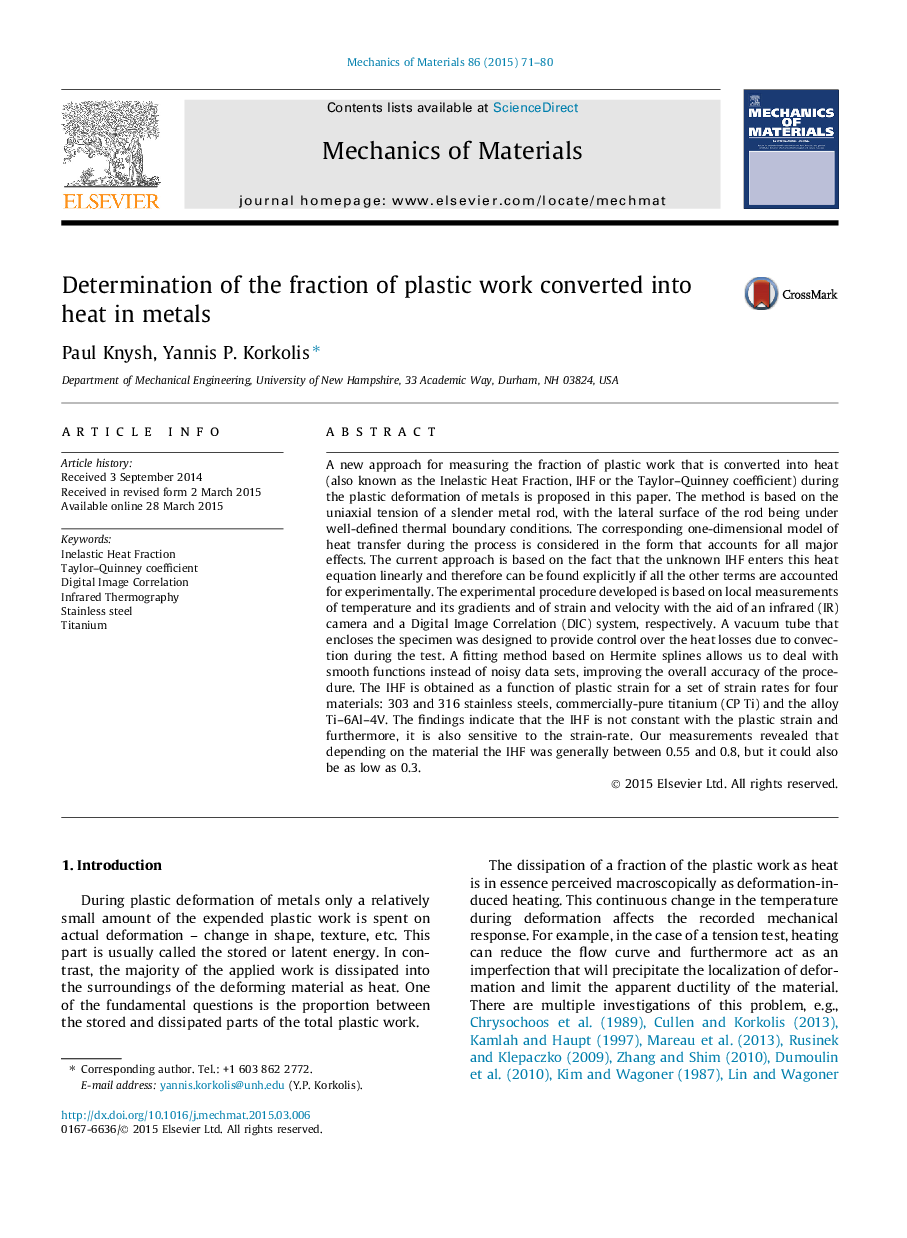| کد مقاله | کد نشریه | سال انتشار | مقاله انگلیسی | نسخه تمام متن |
|---|---|---|---|---|
| 799601 | 1467454 | 2015 | 10 صفحه PDF | دانلود رایگان |
• A simple and robust method for measuring the Inelastic Heat Fraction is proposed.
• The method uses Digital Image Correlation and Infrared Thermography.
• A fitting algorithm was developed to deal with noise in experimental data.
• The method allows to obtain IHF as a function of plastic strain.
• The method is applicable for a wide range of strain rates.
A new approach for measuring the fraction of plastic work that is converted into heat (also known as the Inelastic Heat Fraction, IHF or the Taylor–Quinney coefficient) during the plastic deformation of metals is proposed in this paper. The method is based on the uniaxial tension of a slender metal rod, with the lateral surface of the rod being under well-defined thermal boundary conditions. The corresponding one-dimensional model of heat transfer during the process is considered in the form that accounts for all major effects. The current approach is based on the fact that the unknown IHF enters this heat equation linearly and therefore can be found explicitly if all the other terms are accounted for experimentally. The experimental procedure developed is based on local measurements of temperature and its gradients and of strain and velocity with the aid of an infrared (IR) camera and a Digital Image Correlation (DIC) system, respectively. A vacuum tube that encloses the specimen was designed to provide control over the heat losses due to convection during the test. A fitting method based on Hermite splines allows us to deal with smooth functions instead of noisy data sets, improving the overall accuracy of the procedure. The IHF is obtained as a function of plastic strain for a set of strain rates for four materials: 303 and 316 stainless steels, commercially-pure titanium (CP Ti) and the alloy Ti–6Al–4V. The findings indicate that the IHF is not constant with the plastic strain and furthermore, it is also sensitive to the strain-rate. Our measurements revealed that depending on the material the IHF was generally between 0.55 and 0.8, but it could also be as low as 0.3.
Journal: Mechanics of Materials - Volume 86, July 2015, Pages 71–80
